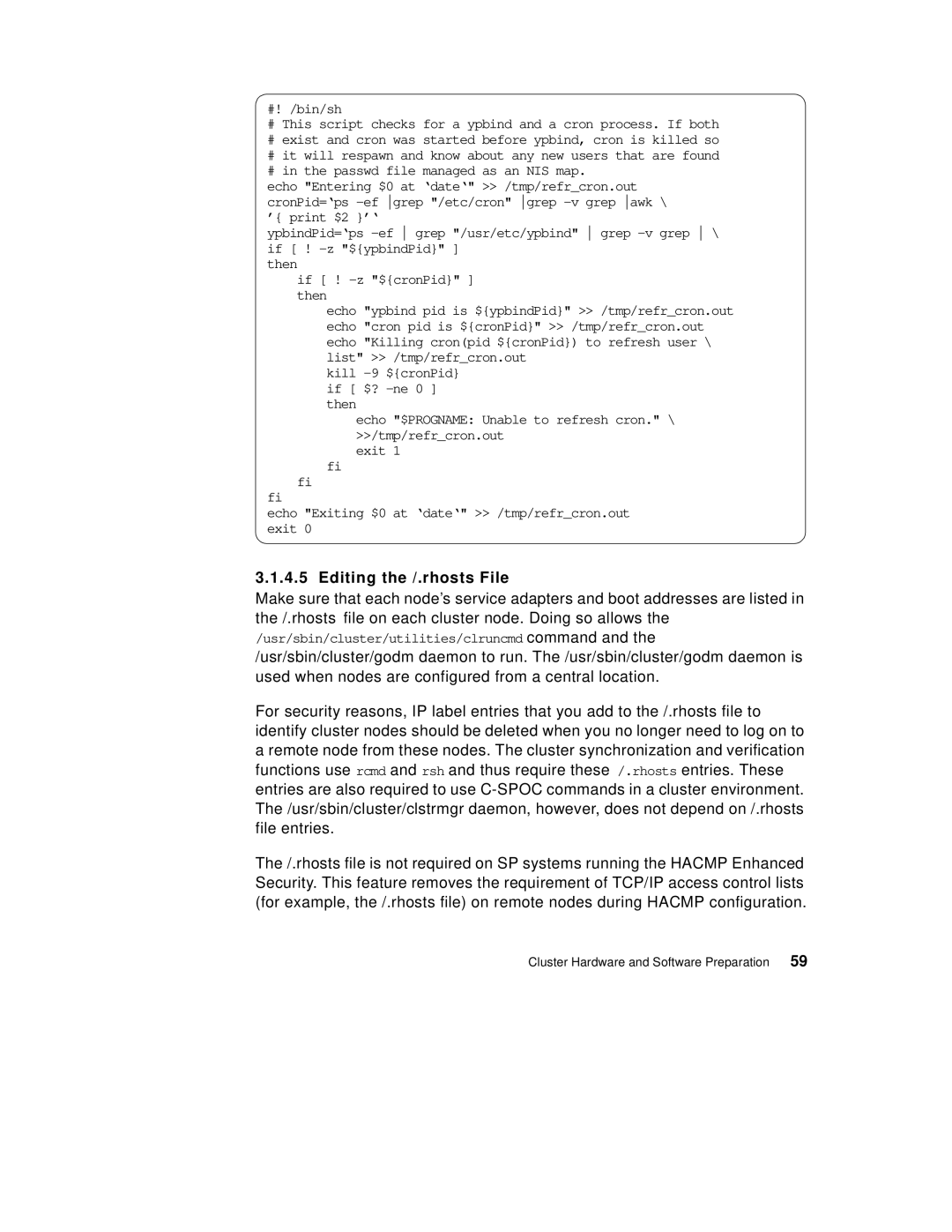
#! /bin/sh
#This script checks for a ypbind and a cron process. If both
#exist and cron was started before ypbind, cron is killed so
#it will respawn and know about any new users that are found
#in the passwd file managed as an NIS map.
echo "Entering $0 at ‘date‘" >> /tmp/refr_cron.out cronPid=‘ps
ypbindPid=‘ps
then
if [ !
echo "ypbind pid is ${ypbindPid}" >> /tmp/refr_cron.out echo "cron pid is ${cronPid}" >> /tmp/refr_cron.out echo "Killing cron(pid ${cronPid}) to refresh user \ list" >> /tmp/refr_cron.out
kill
echo "$PROGNAME: Unable to refresh cron." \ >>/tmp/refr_cron.out
exit 1
fi
fi
fi
echo "Exiting $0 at ‘date‘" >> /tmp/refr_cron.out exit 0
3.1.4.5 Editing the /.rhosts File
Make sure that each node’s service adapters and boot addresses are listed in the /.rhosts file on each cluster node. Doing so allows the /usr/sbin/cluster/utilities/clruncmd command and the /usr/sbin/cluster/godm daemon to run. The /usr/sbin/cluster/godm daemon is used when nodes are configured from a central location.
For security reasons, IP label entries that you add to the /.rhosts file to identify cluster nodes should be deleted when you no longer need to log on to a remote node from these nodes. The cluster synchronization and verification functions use rcmd and rsh and thus require these /.rhosts entries. These entries are also required to use
The /.rhosts file is not required on SP systems running the HACMP Enhanced Security. This feature removes the requirement of TCP/IP access control lists (for example, the /.rhosts file) on remote nodes during HACMP configuration.
Cluster Hardware and Software Preparation | 59 |
